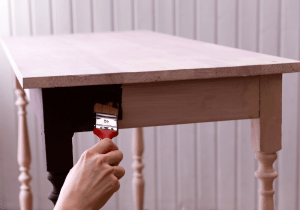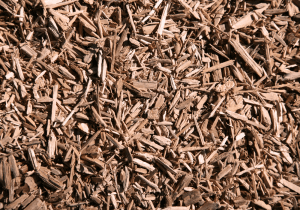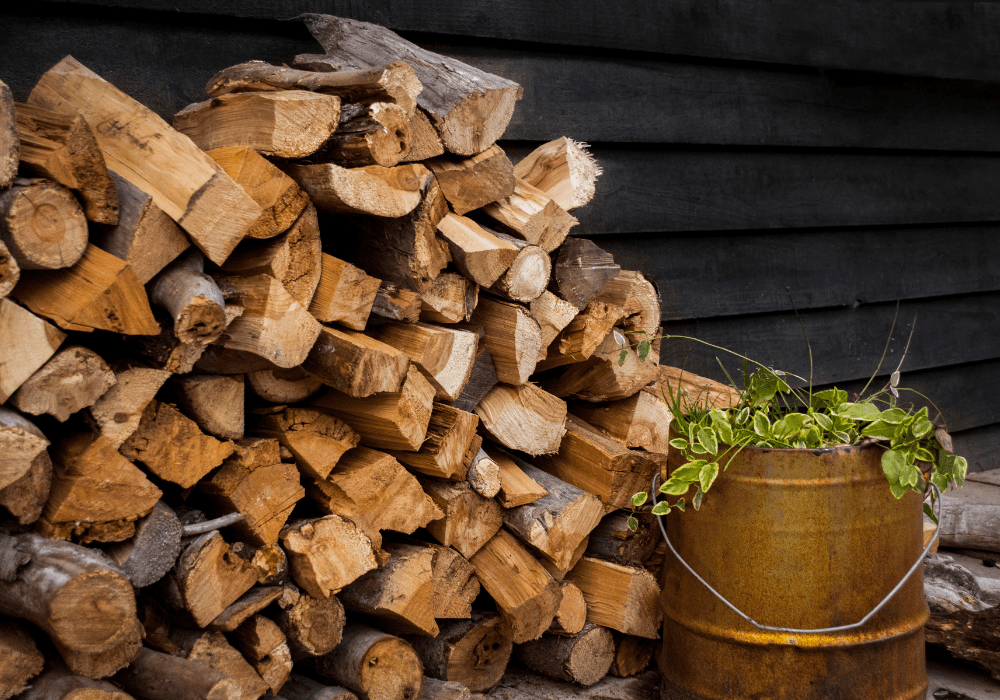The air is getting crisper, and leaves are beginning to fall as summer transitions into autumn. For many homeowners, this seasonal shift brings a common dilemma—what to do with that leftover firewood? Whether you’ve got a small stack or an entire cord, repurposing firewood creatively can be both practical and rewarding. In this post, we’ll explore several innovative ways to use leftover summer firewood, making it a valuable resource for your home and garden.
Practical Indoor Uses
Rustic Home Decor
Leftover firewood can add a touch of rustic charm to your home’s interior. Consider using a few logs as unique decorative pieces. Stack them neatly in a corner or arrange them artistically in a wire basket or wooden crate. You can also slice the wood into thin rounds to create coasters, trivets, or even a rustic wall clock. The natural look of wood adds warmth and texture, complementing various home decor styles.
 Functional Furniture
Functional Furniture
If you’re feeling a bit more ambitious, firewood can be transformed into functional furniture pieces. Craft a small side table, stool, or bookshelf from larger logs. Sand down the surfaces and apply a protective finish to enhance durability. Not only will you have a one-of-a-kind item, but you’ll also be reusing materials that might otherwise go to waste. These pieces can become conversation starters and add a unique character to your home.
Firestarters and Kindling
Even if you don’t have a fireplace, you can still make good use of your firewood by turning it into firestarters or kindling for outdoor fire pits or barbecues. Simply chop smaller pieces and store them in a dry place. You can also create firestarters by bundling small twigs and wrapping them with twine. These homemade options are more eco-friendly and cost-effective compared to store-bought alternatives.
Enhancing Outdoor Spaces
Garden Edging and Pathways
Leftover firewood can be a fantastic addition to your garden. Use logs as natural edging for garden beds or pathways. Simply place the logs side by side to create a border that keeps soil and mulch in place while adding a rustic touch to your landscape. For added stability, partially bury the logs in the ground. This method not only looks great but also helps with soil retention and garden maintenance.
Outdoor Seating
Create cozy outdoor seating areas using your firewood. Arrange a few sturdy logs around a fire pit or under a shaded tree to serve as makeshift stools. You can also stack logs to form benches, adding a wooden plank on top for a flat seating surface. These seating options are perfect for impromptu gatherings, allowing you to enjoy your outdoor space to the fullest.
Wildlife Shelters
Firewood can also benefit local wildlife. Stack logs in a secluded corner of your yard to create a habitat for small creatures like insects, birds, and even hedgehogs. This natural shelter provides protection from predators and harsh weather conditions. By creating a wildlife-friendly zone, you’ll be supporting biodiversity and attracting beneficial critters to your garden.
Sustainable Practices
 Composting and Mulching
Composting and Mulching
Repurposing firewood can contribute to sustainable gardening practices. Turn small branches and wood chips into mulch for your garden beds. Mulch helps retain soil moisture, suppress weeds, and enrich the soil as it decomposes. Alternatively, you can add wood chips to your compost pile, providing a source of carbon that balances out nitrogen-rich materials like kitchen scraps and grass clippings.
Wood Crafts and DIY Projects
Engage in DIY projects that promote sustainability. Use firewood to create crafts such as birdhouses, planters, or even small wooden sculptures. These projects not only reduce waste but also allow you to express your creativity. Additionally, handcrafted wooden items make thoughtful gifts for friends and family, offering a personal touch that store-bought items can’t match.
Reducing Carbon Footprint
By finding creative uses for leftover firewood, you’re contributing to a more sustainable lifestyle. Repurposing firewood reduces the need for new materials, which in turn lowers the demand for logging and transportation. This practice helps to minimize your carbon footprint and promotes the responsible use of natural resources.
Safety Tips
Proper Storage
When storing leftover firewood, safety is paramount. Ensure that the wood is kept in a dry, well-ventilated area to prevent mold and insect infestations. Stack the wood off the ground using a pallet or firewood rack to improve air circulation. Cover the top of the pile with a tarp, leaving the sides exposed to allow moisture to escape. Proper storage extends the life of your firewood and keeps it ready for future use.
Safe Handling
Handling firewood safely is crucial to prevent injuries. Wear gloves to protect your hands from splinters and sharp edges. Use a sturdy wheelbarrow or cart to transport heavy loads, reducing the risk of straining your back. When cutting or splitting wood, always use appropriate tools and follow safety guidelines to avoid accidents.
Pest Prevention
Firewood can attract pests like termites, ants, and rodents. To minimize this risk, store your firewood at least 20 feet away from your home and other structures. Regularly inspect the pile for signs of infestation and remove any affected logs immediately. If you notice persistent pest issues, consider consulting a pest control professional for advice. Taking these precautions ensures that your firewood remains a safe and useful resource.
Leftover summer firewood doesn’t have to be a burden. With a bit of creativity and effort, you can transform it into a valuable asset for your home and garden. From rustic decor and functional furniture to sustainable gardening practices and wildlife shelters, the possibilities are endless. By repurposing firewood, you’re not only enhancing your living space but also contributing to a more sustainable and eco-friendly lifestyle.

